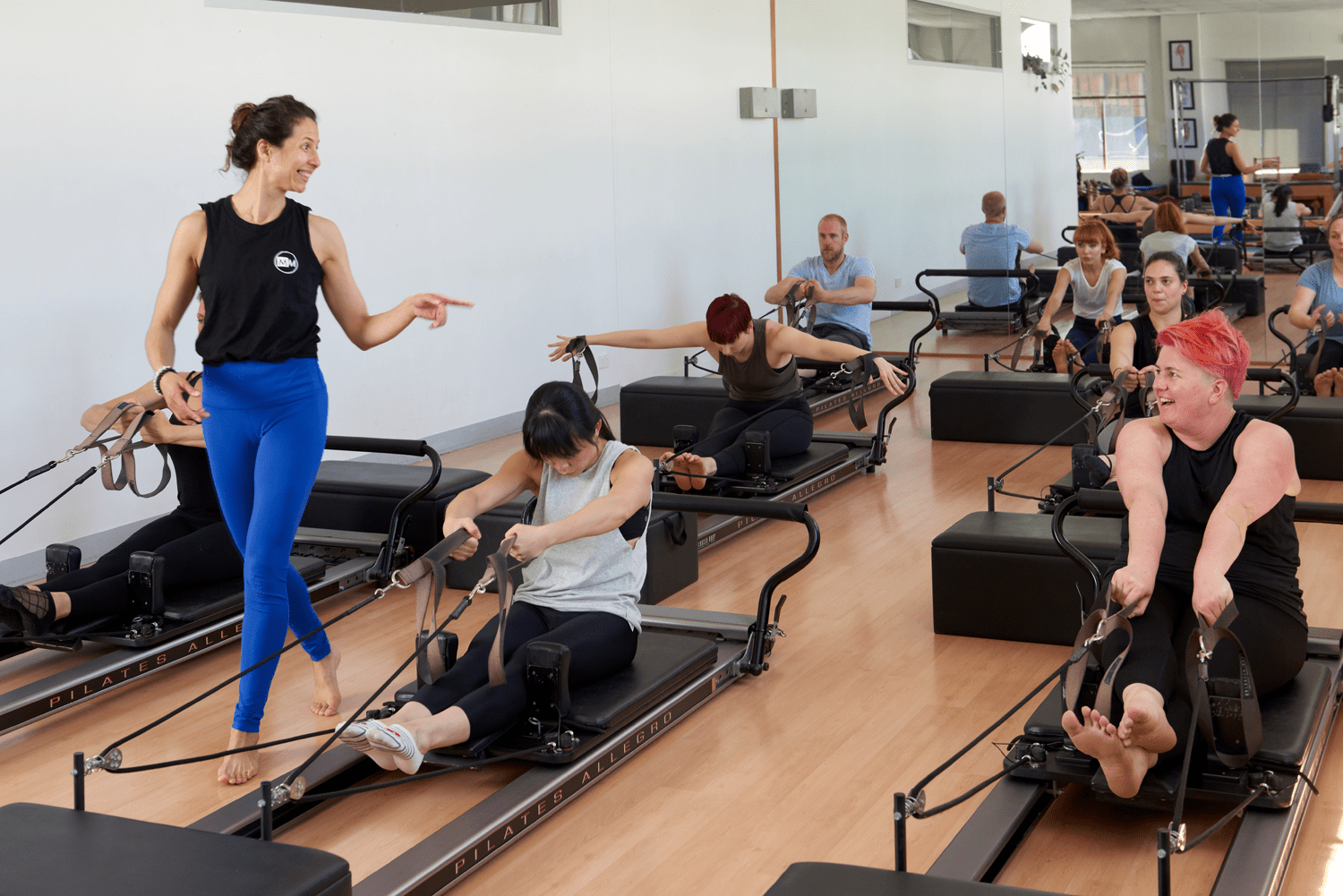Reformer Pilates
Where did it come from, and why is it all the rage?
I’m sure you’ve heard it before - it’s been in all the fashion magazines - Reformer Pilates is one of the go-to exercise options for those who want a full body exercise session that tones and lengthens the physique, without the hard bouncing and landing on your joints that traditional gym exercises have. Many people, including a huge number of celebrities and sport stars have regular sessions to maintain their physical shape and strength, or have their own reformer at home so they can have 24/7 access to the joys of reformer Pilates. But if you haven’t actually done a session before - what the heck is it?! Firstly, let’s break down the name to help see where it all comes from.
Reformer
The Reformer, or historically known as The Universal Reformer by it’s creator Joseph Pilates, is a spring resisted carriage that runs up and down inside a sturdy frame. The amount of resistance that can be applied is adjustable, and it has an adjustable foot bar, shoulder pads and a head rest, while also boasting straps that you can pull on with your hands and feet, and a box you can sometimes use. The reformer itself comes in many different shapes and sizes depending on the manufacturer, but generally always follows the same principles for design. Due to nature of the carriage being limited it it’s direction of movement, having these extra bits to push and pull on opens up a huge amount of ways to actually use the machine - sometimes you’re on your back, sometimes your front; you might try some work standing, or maybe kneeling… Ultimately it comes down to the creativity of the practitioner you’re working with to determine just what you’re going to be doing on any given day. A lot of Reformer Pilates studio’s have extra items they’ll use in classes such as balls, weights, Pilates resistance circles, and jump boards.
Pilates
Pilates is actually the name of Joseph Pilates, and the work he created is actually called Contrology - but that’s a bit of a mouthful, so Pilates is what stuck for the general population. Joseph’s legacy was his work, designing exercise equipment and exercises that people can use to strengthen their physique as a way of fending off the dangers of a sedentary lifestyle and ensuring their physical health matched their mental health. During this time, he established set exercises on set machinery, guided by six key principles - full concentration, complete control, using your center (core), flowing movements, precision with the movement, and breathing with the movement. It’s with these principles that Pilates has developed beyond the initial ground work that Joseph created decades ago, although it’s still up for debate whether that’s been a good thing or not, as Pilates is now more synonymous with the idea of Dynamic Reformer Pilates than the original work that was created.
Dynamic Reformer Pilates
This is the kind of Pilates that is in all the magazines. And not necessarily because it’s the best, but more because it’s a better business model. Rob’s first introduction to Pilates was through working for one of the first Dynamic Reformer Pilates businesses in London, which was co-founded by a PT from Australia, and a business women who he’d rehabilitated from a back injury using the reformer. The goal of these types of studios is to provide exercises that are challenging, but reasonably safe, and work the participants to the point of fatigue and beyond to build strength - which is fantastic for those who aren’t injured and just need a great workout. They’ll often blend weights and other props in to a movement so there are multiple things going on at once. And because these businesses have bigger class sizes, they can keep costs down and teach a relatively consistent product without getting bogged down in the requirement to know anatomy and physiology to safely rehabilitate an injury. And in the case of the London business, they used their marketing background to leverage off things like PR and media advertising to grow the business rapidly. This same model has played out across Australia with the likes of KX Pilates franchises continuing to pop up in any major center, as well as old trainers opening up their own studios under different brands.
So is Dynamic Reformer Pilates right for me?
There’s a reason these types of businesses are really popular. They are fun, challenging, often have great music, and are affordable. So if any of that sounds good to you, then it’s worth having a look at some classes. But this isn’t for everyone - if you currently or have previously had injuries that can easily be aggravated, these types of classes will not be good for you.




